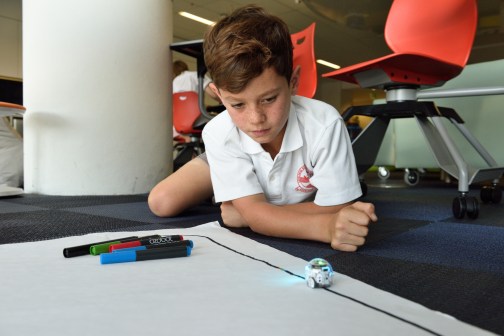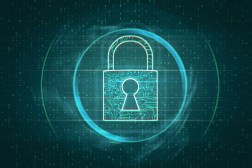How to improve digital instruction with the science of learning

The principles of learning have been around for centuries, but it’s only in the last 20 to 30 years that the science of learning has been studied rigorously.
According to Paul W. Ownby, senior product manager at Learning.com, the science of learning today is centered on how people can maximize knowledge retention. Ownby made the claim in a recent webinar hosted by edWeb.net that maximum learning occurs when students engage the thinking, sensing, and feeling systems in the brain together. By leveraging the science of learning, he says classroom educators can design activities that are efficient, engaging, model persistence, and reinforce student identity.
Thinking
The thinking, or decision-making and problem-solving area of the brain, is where goals are established and planned, strategies are devised to reach those goals and success is determined through reflection and evaluation. For students to make connections to their learning, digital instruction should include activities that engage this area of the brain. These thinking engagement activities need to communicate the purpose of learning the skill, create opportunities for collaboration and provide interactive activities that guide students through a reflection process.
Sensing
Ownby said when students’ senses are activated, they become engaged more deeply in the learning process because they find ways to personalize their connection to concepts. Digital instruction that includes music, animation, or physical objects holds the potential for improved learning. Lessons that include interactive tasks can provides students opportunities to be active, collaborative, and reflective participants in the lesson.
Feeling
When classroom teachers introduce a concept, it is critical that students associate it in the context of positive emotions such as fun and excitement and that the idea or lesson connects to students’ past experiences of learning success, Ownby said. This ensures that students gain a positive connection to the material and will be encourages to continue learning.
Critical components
In outlining these brain functions, Ownby stressed the value of learning reinforcement and recall practice.
When students connect with their interests, cultures, or past experiences, they create personal connections to their educations. He said this personalized connection to learning creates feelings of success in students, and they see themselves as capable in the subject area presented in their lessons.
For reinforcement strategies, Ownby recommended developing lessons and activities around subject areas with a broad range of ideas and interest areas. When students with a variety of interests and backgrounds are active participants in a lesson, the retention of information increases dramatically, he said.
Finally, recall practice enables students to connect ideas across subjects and topics and create pathways in the brain that improve retention.
About the presenter
Paul Ownby, senior product manager for Learning.com, provides product direction for Learning.com’s digital literacy, computer science, and coding curricular products. Paul has worked in product management and content development for more than 20 years with a particular focus on technology and education. As part of the initial product and development team for Learning.com’s EasyTech curriculum, Paul worked closely with co-founder Barclay Burns to establish content design guidelines for Learning.com’s interactive lessons that leveraged principles found in the Science of Learning to maximize learning in online lessons. He is passionate about digital and technical learning, and leveraging what we know about how we learn to make learning and teaching efforts more efficient.
About the host
Jeff Meyer, Director of Education for Learning.com, provides thought leadership, professional development, and consulting with educators, parents, and students regarding the importance of digital literacy education and how Learning.com helps students excel in a digital world. Jeff has worked in public education since 1982 as a high school English language arts teacher and physical education coach. After receiving an M.Ed in curriculum and instruction and instructional technology, Jeff worked as Director of Professional Development and Instructional Technology in the Eanes Independent School District in Austin, Texas and then was named Director of Instructional Technology for Austin Independent School District in 2000. Jeff joined Learning.com in 2005 and has worked in a variety of roles, including professional development, customer services, and product marketing. He is passionate about the need to transform education using data-based, student-centered approaches and digital resources to prepare students for the future.
Join the community
Success in a Digital World is a free professional learning community on edWeb.net that will help you prepare your students with the skills they need to excel in our digital world.
The edWeb webinar referenced above, sponsored by Learning.com, can be found here.




